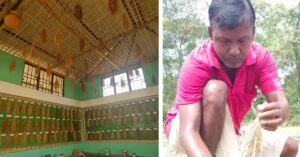In 4 Years, Man Helps Villagers Raise Their Incomes By 40%, Plant 2.1 Million Trees
“We have been able to directly impact about 4,500 people directly. Indirectly (since households are dependent on them), this number is close to about 30,000,” says Saurav Malhotra.
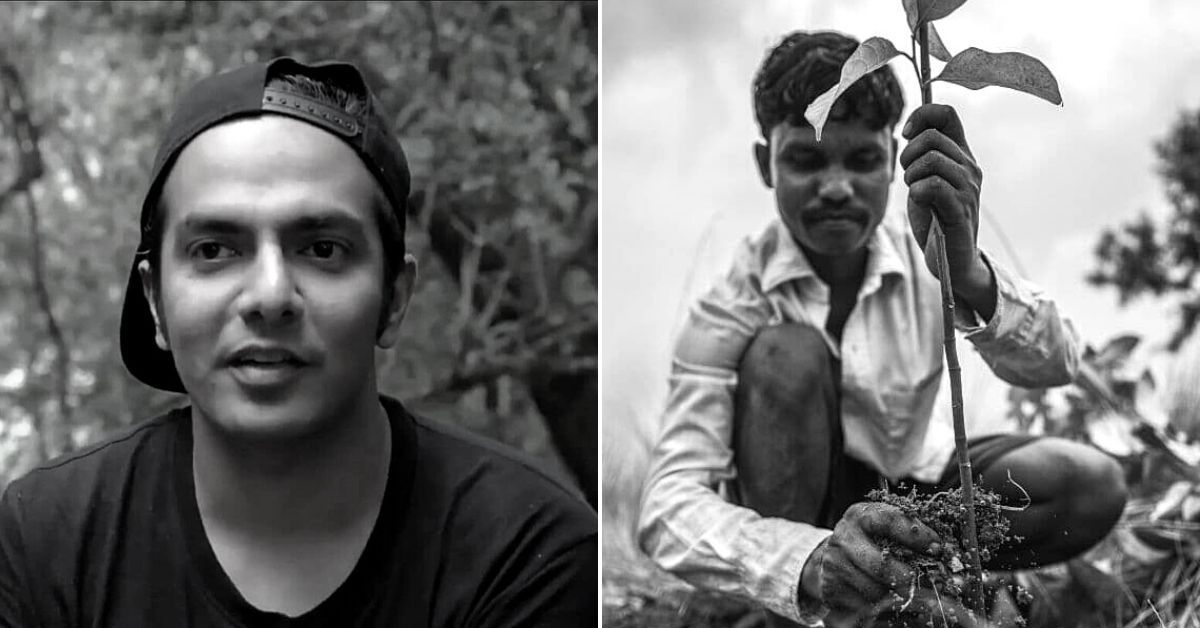
In Udalguri district, Assam, bordering Bhutan, locals from the Bodo community reforested over 1200 hectares of land. In and around the Bhairabkunda Reserve Forest, along with planting trees, they started a medicinal plant garden based on Bodo indigenous knowledge, agroforestry patches and even an eco-tourism project. The change is a result of the Balipara Foundation’s work and their programme Rural Futures.
In 2016, concerned about the growing effects of climate change on the state of Assam, Saurav Malhotra (32) returned to his native town, from a university teaching job in Germany.
“I grew up amidst nature visiting the Kaziranga National Park and Nameri National Park with my parents every chance I got. And over the years, a growing understanding about climate change shifted my attention to the relationship between humans and the environment,” says Saurav, a biology major, and native of Guwahati speaking to The Better India (TBI).
Later that year, he began interning with the Balipara Foundation, a non-profit in the Northeast dedicated to conserving and preserving the natural heritage of the Eastern Himalayas.
Currently, Saurav is working with the Balipara Foundation to run a pilot project — The Rural Futures — in four areas of Assam: Udalguri area in the Assam-Bhutan border belt, Sonai Rupai Wildlife Sanctuary, Balipara Reserve Forest again with the Bodo community and Baligaon. Within these four geographic locations, they are working with about 12 villages. These villages comprise four to five different ethnic communities — Bodo, Mishing, Garo and Nyshi and Adivasi.
“In these four years, we have been able to impact about 4,500 people, directly and indirectly, this number is close to about 30,000 (since households are dependent on them). Across these communities, the immediate impact is the cash that they are earning via the process of collecting seeds and planting trees. Our 4,500 people have managed to plant over 2.1 million trees across the four geographic locations covering over 2,000 hectares,” says Prabir Banerjea, Managing Member of the Balipara Foundation, speaking to TBI.
And all this is based on the novel concept of Naturenomics.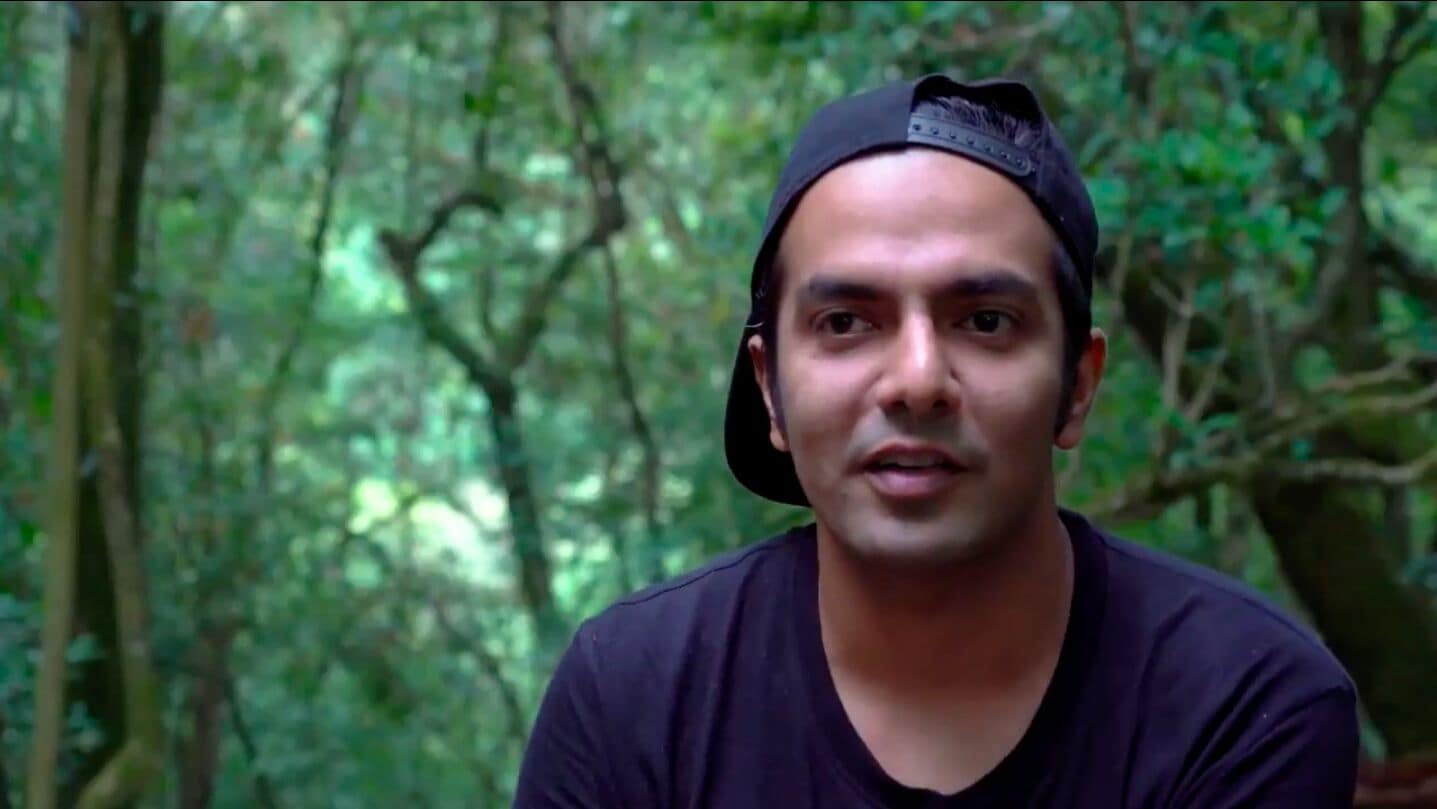
So, what is Naturenomics?
The current model of economic development emphasises on a tradeoff between ‘development’ and sustaining natural resources. However, it’s self-evident that this is not a zero-sum game. We can have economic development and yet sustain our natural resources. This is where the concept of Naturenomics comes through.
“Naturenomics relates to capital formation for a region or organisation through the creation of ecologically ‘compliant’ assets in a sustainable manner . . . A Naturenomics based economy attempts to secure six key parameters – land, energy, waste, water, air and carbon . . . Building on our commonwealth – our natural assets – is the first step in building an economy that is both sustainable and equitable,” notes Balipara Foundation.
“For the last 10 years, the Balipara Foundation has been involved with the conservation of elephants in the Eastern Himalayas. By the time I began my internship in December 2016, they were already moving from single species to holistic landscape-scale conservation. Robin Eastman, a colleague of mine, was just starting a project in the Udalguri district of Assam on the fringes of the Bhairabkunda Reserve Forest, where the indigenous Bodo community resides. This project was based on reforestation of degraded forest land,” recalls Saurav.
During the internship, where he closely interacted with the local community, he learned a few critical facets of forest conservation. Firstly, the centrality of humans, particularly communities, living in the forest or on its fringes, to the process of preservation.
Secondly, these communities weren’t primarily responsible for rising deforestation in the Northeast. Forces larger than them including industry, government and the insurgency movement, which depended on timber for currency, were mostly responsible. But these communities paid the price.
Finally, the way out of this quagmire for these communities is to develop an economic model whereby regrowing forests and allied agroforestry activities become a source of livelihood, income and long term sustenance.
Following his internship, Saurav began work full time with the Balipara Foundation and developed a unique model called Rural Futures. This model tries to get communities behind the value chain of rewilding forests, right from seeds, nurseries to reforestation.
From there, they proceed to create added livelihood incentives to optimise the value of land either through agroforestry or using traditional indigenous knowledge of growing medicinal plants or mushrooms. This adds value to the land in terms of money, yield, nutrition and food security.
“The monetary value communities obtain from agroforestry land, and forest land is actually enough to deliver a system of universal basic income and universal basic assets. Achieving universal basic income may take a lot longer, but communities taking care of the land and harvesting things from it is a great way to deliver universal basic assets for their communities. These assets are from the water supply, healthcare, education and energy created by communities who no longer have to depend on governments for primary intervention,” he says.
The whole point of this project is not for the likes of Saurav or the Balipara Foundation to decide what people need, but give agency to these communities. Their role is to guide them through a process whereby they earn in an eco-friendly manner which also adds to the local biodiversity. Decisions regarding these measures are taken entirely by these communities.
“Communities become guardians of their natural capital. This natural capital is the money they earn from bamboo, soft timber, fruits, medicinal plants and if planned well what this can bring in a lot of income. Individual households can earn as much as Rs 10 lakh from a hectare in a year. The whole idea is to bring power back to communities. They have a lot of knowledge, but for the last 40 years because of our lack of respect of indigenous cultures, rights and communities, we have taken that power away from them,” says Saurav.
How Does The Rural Futures Model Work?
Before any project commences, the Balipara Foundation works with local non-profits and a team of scientists from regional universities to ascertain its viability, document local knowledge of forests, the trees around them and verify it.
These scientists are part of the Balipara Foundation and from partner NGOs like Ashoka Trust for Research in Ecology and Environment, global organisations like IUCN and local partners like MASK, an Assam-based non-profit, Tezpur University and Guwahati University. The bottom line is figuring out a way whereby forests keep feeding people over the years.
Also, before any project commences, the Balipara Foundation submits a plan to a few donor agencies like the HT Parekh Foundation of the HDFC Bank, Tata Trust and Axis Bank Foundation. They receive seed funding from these donors.
Nearly 70 per cent of the money is paid directly to local communities as daily wages to collect seeds, plant trees and create immediate jobs. This daily wage is Rs 250 per day, and this comes from the project fund. Members of the local community working on the project are incentivised to grow trees with that daily wage—this amount is paid for the duration of the project anywhere between four years to six years.
“We calculate the funds required by calculating the number of trees that will be planted and by how many people. The population of these villages vary from 30 to 300 households. The average funds we require to kickstart a project is about Rs 1 crore a year. We can plant about 2-3 lakh trees per year depending on the area,” Prabir.
However, alongside rewilding the forests, local communities are encouraged to start growing homestead agroforestry plots in the vicinity of their homes. On these plots, they grow bamboo, papaya, mushrooms, moringa, chilli, lemon, tea and medicinal plants.
“The yearly fund requirement for any kind of project is between Rs 1.5-2 crore, but that figure goes down each year. The funding model works in such a way that from year 3 and 4 onwards people generate revenue from their agroforestry patches on community land, joint harvesting from forest land or their homestead garden,” says Saurav.
The revenue model works on a positive feedback loop such that from year three onwards people acquire revenue from what they did in year 1. They think that by year 10, people will not only have enough money to build a school for themselves but have more than enough reserves of cash to carry out reforestation work of their own.
“Locals realise that the more land they plant, they’ll get more income from the subsequent harvest,” adds Saurav.
Also, money from donor agencies is spent on local youth who are trained, skilled or employed in taking photographs, establishing GPS coordinates and documenting indigenous knowledge used to grow trees or medicinal plants. Once they are skilled, their wages increase, and many of them are actually on the Balipara Foundation payroll and carry out other activities in different villages like awareness camps about these initiatives.

Results of Rural Futures
The first site where the Rural Futures project took off is in the Bhairabkunda Reserve Forest of Udalguri district, Assam, which began in 2017, in six villages along the Indo-Bhutan border. Locals from the Bodo tribal community had already started to plant trees through the Joint Forest Management Committee (JFMC) model of the government, which includes the local forest department.
This had started getting local communities involved through reforestation initiatives, but the Rural Futures initiative took that to another level.
“By the first year of the project in and around Bhairabkunda, people already showed a 40-50 per cent increment in their annual earnings. By the end of the project, when they start reaping that natural capital, we expect a 100-150 per cent increase in yearly earnings,” says Saurav, describing its financial viability.
In a village called Baligaon Miri inhabited by the Mishing tribe of Assam, people came together to create homestead gardens and agroforestry patches across river islands that belong to the community. People got together to reforest these islands and create safe spaces there for elephants and harvest spaces for humans through agroforestry. Besides, they started village homestays for tourists visiting the area.
“There are about 100 households in Baligaon that already have a growing agroforestry programme. This is just land that was lying fallow behind their house, where they grow mushrooms, potatoes and chilli in the summer. This land now grows five crops all around the year, and their income has jumped from Rs 1 lakh a year to about Rs 4.5 lakh. The community youth group is managing this money. How this money is spent is determined by them. This is the people’s money, which they have decided to use to renovate the school in their village,” says Saurav.
The baseline revenue is from homestead gardens, and added revenue is from things like tourism. Women in a few nearby villages have also aggregated to form a handloom cluster through the money they have earned from their homestead garden.
Their cluster is now producing garments like shawls and sarees made of Muga (golden thread) silk found in Assam. Half of their products are made of Muga, while the other 30 per cent is local handloom cotton clothing items. Both silk and cotton are harvested and processed locally using domestic looms, and they use organic dyes (turmeric, tea leaves or using onions). It’s a zero chemical process, and the products as of now are apparel based products. For the time being, however, COVID-19 has brought a halt to their sales.
“We launched a brand last year called Elephant Country. Through this brand, we are marketing their products across the country through online portals. Our women have gone to trade shows in Delhi to display their products. We also had tourists coming in from seven different countries and domestic tourists as well,” says Saurav.
However, the consumer base for most products, particularly edibles, is concentrated locally. Communities grow foodstuff which has local demand.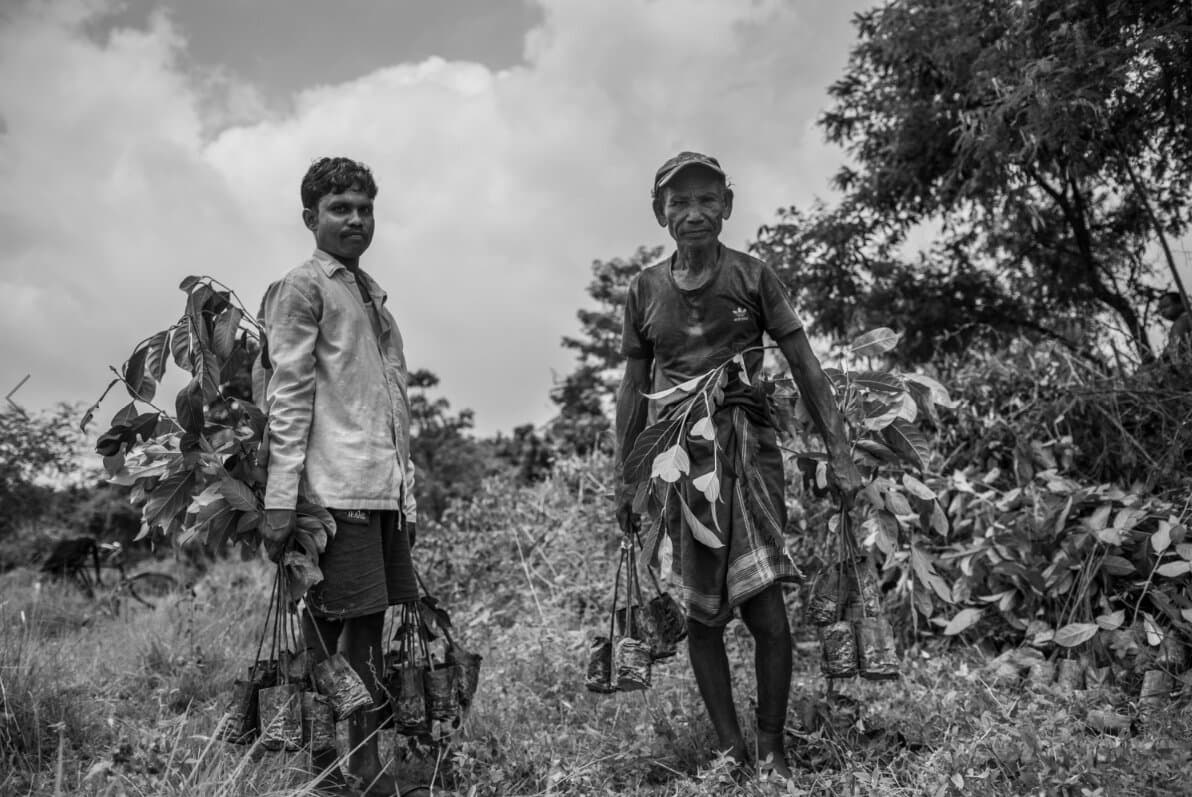
Creating a Symbiotic Ecosystem
“We do not want to immediately create a system such that everything needs to be transported 400 km away from the site to be packaged and sold. Everything is sold in the local markets that are much more resilient. Even during the COVID-19 induced lockdown, these local markets were functional,” says Prabir.
“My friends and I have been working on the Baligaon Rural Futures lab trying to set an example of agroforestry across land owned by our communities. My earnings have jumped significantly, and I can now support my family. But also, it’s great to see the youth of the village involved in good work for their community. Like, learning new skills that will be of great help to them in the future – photography, using a GPS device and also learning how to do the accounting of our produce on the computer,” says Biman Mili of Baligaon Miri village.
All this livelihood generation also has another purpose, which is conserving elephants as well. In Sonitpur district, for example, the Balipara Foundation, together with a local partner, MASK, has helped set up a community group monitoring elephant movement and pathways using an app.
“We are using that data to figure out how we are going to rebuild corridors for elephants, but we are not doing this by displacing humans living there. We are incentivising people into land optimisation in such a way that they are resistant to damages caused by elephants. If you have a system of economic backup in the community or personally through agroforestry, people are more tolerant of wildlife movement. Thus, rural Futures is not just a human plan, but one which includes wildlife, forest and generating biodiversity,” says Saurav.
Some of the lands where they have planted trees were already existing degraded forests that needed reviving. The patches of existing forest have also come under community management and protection. Previously, forest areas that were being destroyed by external forces have now come under community protection and guard.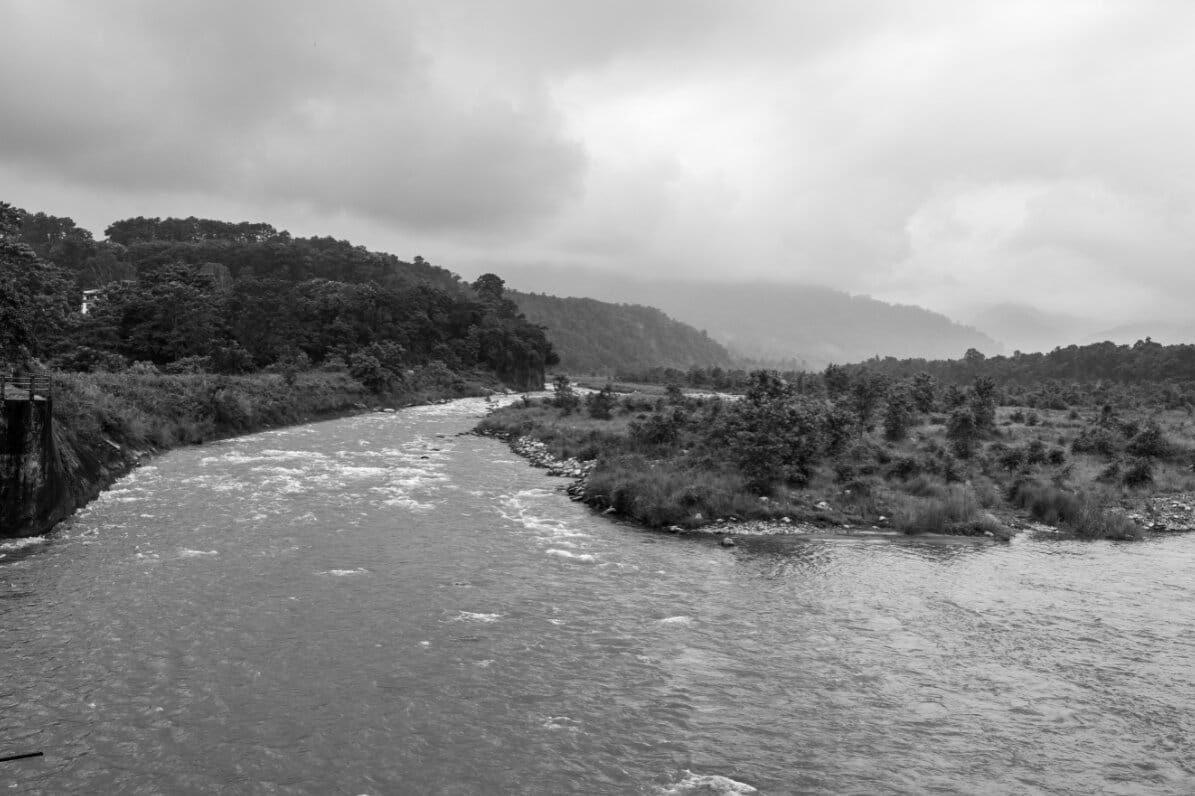
“If you look at the total number of trees that these communities are protecting, the number would be about 5.5 million, of which the people have planted 2.1 million. In the first and second year of afforestation, we have managed to increase people’s incomes by an average of 45 per cent. People who are reaping benefits from agroforestry, their incomes have shot up by 120-140 per cent depending on the area and people’s motivation. One thing we have noticed, particularly during the pandemic, is that a lot of the youth have come back to these areas from their jobs in big Indian cities. They now see economic opportunity in the villages,” says Saurav.
“I started working with my community on the Rural Futures programme early last year. What drove me was the idea of restoring the forests that we call home and that we would be able to generate future revenue from it without chopping trees. The programme has not only planted over 4 lakh trees in our forest area but has also immediately increased our annual incomes by 40-50 per cent; in my case, over 50 per cent. Our communities have also started growing a lot of our indigenous medicinal crops again, and the benefits of this are many,” says Dimbeswar Rabha of Eraliloga village, Balipara Reserve Forest.
Rural Futures covers a whole ambit of conservation, propagation, preservation, documentation and creating opportunities for livelihood generation. This is just the start. As Saurav admits, there is still a long way to go, but the potential is immense.
(Edited by Saiqua Sultan)
Like this story? Or have something to share? Write to us: [email protected], or connect with us on Facebook and Twitter.
This story made me
- 97
- 121
- 89
- 167
Tell Us More
We bring stories straight from the heart of India, to inspire millions and create a wave of impact. Our positive movement is growing bigger everyday, and we would love for you to join it.
Please contribute whatever you can, every little penny helps our team in bringing you more stories that support dreams and spread hope.






